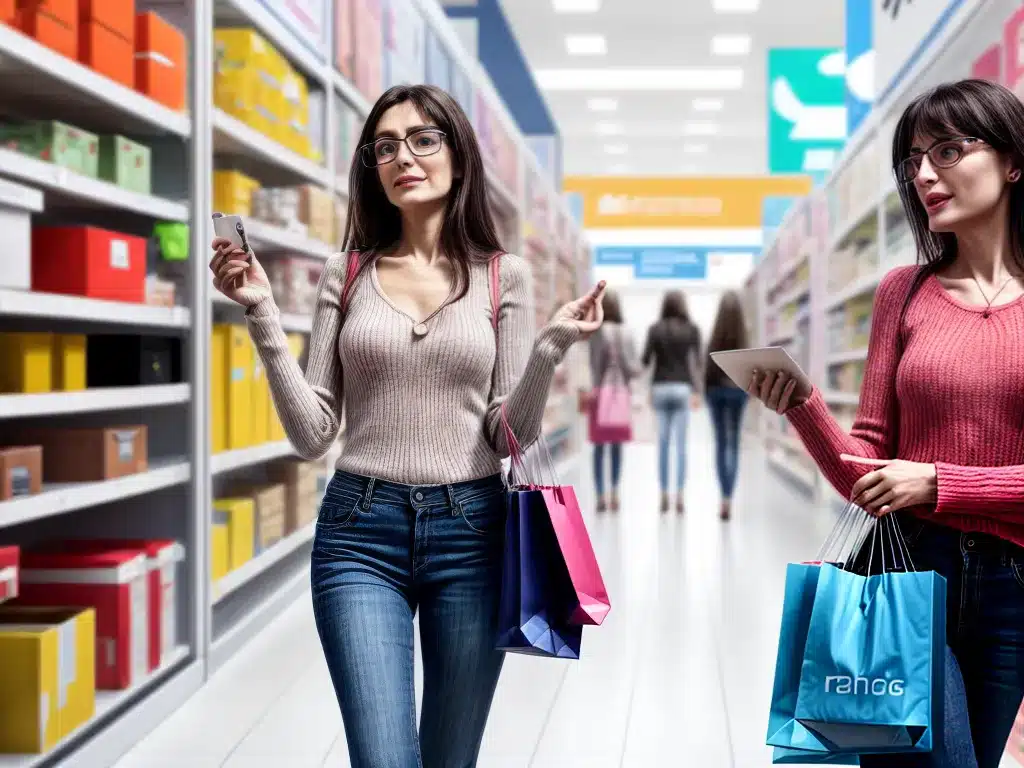
IoT in Retail – Personalization is Key in 2024
Introduction
The internet of things (IoT) is transforming the retail industry. By 2024, IoT will enable retailers to offer highly personalized shopping experiences that drive customer loyalty. As an industry expert, I will explain how IoT is powering retail personalization and why it will be a key strategy for retailers in 2024.
How IoT Enables Personalization
IoT allows retailers to collect data about customers and their preferences. This data fuels personalization across the shopping journey. Here are some key ways IoT enables retail personalization:
In-Store Personalization
-
Beacons – Bluetooth low energy beacons detect customers’ smartphones as they enter stores. Retailers can then send personalized offers and recommendations to shoppers’ devices based on past purchases and preferences.
-
Digital signage – Signs and displays can customize content and offers for customers in real-time based on recognizable data like age, gender, or loyalty status.
-
Smart dressing rooms – RFID tags on clothing allow dressing room mirrors to display other sizes, colors, and outfit recommendations for shoppers to try.
Omnichannel Personalization
-
Connected inventory – IoT sensors on shelves track product availability across stores and online. This allows retailers to tailor product recommendations and fulfillment options to each customer.
-
Predictive analytics – Data collected from IoT devices feeds complex algorithms that predict customer needs and preferences. Retailers use these insights to provide personalized recommendations across web, mobile, email, and in-store.
Contextual Personalization
-
Location tracking – In-store location tracking via smartphone allows for contextually relevant offers and information to be provided to shoppers as they browse.
-
Situational awareness – IoT sensors like cameras can detect long lines or crowded spaces. Retailers can then adapt by sending promotions to shoppers’ phones to divert them to less busy areas.
Personalization Drives Loyalty
Studies show personalized shopping experiences drive loyalty. Here’s why it works:
- Feels like VIP treatment – When customers feel truly recognized and catered to, it makes them feel valued by the retailer.
- Relevant recommendations – Shoppers appreciate when retailers anticipate their needs and preferences with spot-on recommendations. This saves them time.
- Customized incentives – Personalized promotions, coupons and perks incentivize customers to make purchases and engage more with the brand.
- Immersive shopping – In-store personalization via IoT creates an interactive, engaging shopping environment that customers enjoy.
According to an Epsilon survey, 80% of customers are more likely to make a purchase when brands provide personalized experiences. Retailers that tap into IoT to provide personalized customer experiences will gain a clear competitive advantage.
Challenges With IoT Personalization
While personalized shopping is increasingly expected by customers, effectively implementing an IoT personalization strategy comes with some challenges for retailers:
-
Data security – Collecting customer data raises privacy concerns that must be addressed transparently and proactively.
-
Accuracy – Retailers need skilled data scientists to build algorithms and analytics models that actually predict customer preferences accurately.
-
Cross-channel integration – IoT capabilities need to integrate seamlessly across web, mobile, in-store and other channels to create a unified personalized experience.
-
Cost – There are significant costs associated with installing and maintaining IoT sensors, connectivity, infrastructure and analytics capabilities. The ROI needs to justify the investment.
Key Takeaways on IoT and Retail Personalization
By 2024, IoT will be a vital driver of retail personalization. Key points to remember:
-
IoT allows retailers to collect customer data and preferences that fuel personalization.
-
Personalized shopping experiences build loyalty by making customers feel valued and catered to.
-
While promising, IoT personalization requires overcoming challenges like privacy, accuracy and costs.
-
Retailers that leverage IoT to provide personalized omnichannel shopping in 2024 will gain a competitive edge with customers.
The future of retail will be defined by customer-centric shopping experiences. IoT is the connective technology that will get retailers there, delivering the real-time personalization that consumers desire. Retailers need to start putting the infrastructure and strategy in place now to use IoT data to power seamless, tailored customer experiences across all channels. The personalized future of retail has arrived.












